#amphibian conservation
Text
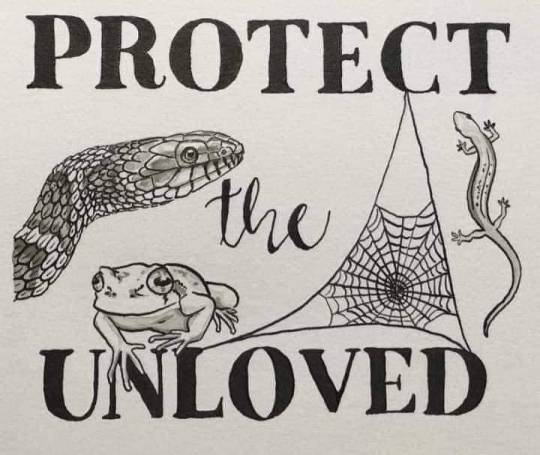
#environment#animals#snakes#frogs#newts#amphibians#endangered#love#extinct#conservation#nature#stolen#true#reptiles#spiders#arachnids
18K notes
·
View notes
Text

W.T.Eft number 04. Early spring is the start of amphibian migration and mating season. Keep an eye out on rainy cool nights for these horn balls lookin for a hot date.
#indie comics#newts#salamanders#comic strip#oc art#webcomic#amphibian comics#amphibian conservation#the big night#comic art#cartoon
0 notes
Text
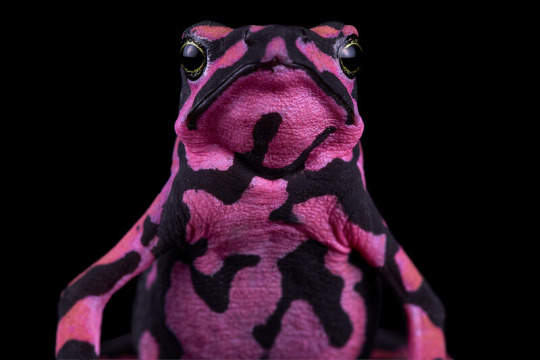
Bad Newts: Amphibians are in Serious Trouble
My colleagues and I have just had a paper published in Nature, based on our efforts to assess almost all amphibian species for the IUCN Red Lists. The major takeaway messages:
It is a bad time to be an amphibian
Two fifths of all amphibians are threatened with extinction.
Salamanders are the most threatened group; three fifths of all salamanders are threatened with extinction!
Climate change is a major driver of amphibian declines globally
Habitat loss, especially due to agriculture, is a problem for the vast majority of amphibians
Chytrid pandemics have caused and continue to cause catastrophic declines of both salamanders and frogs
Protected areas and careful management are working as strategies! They are actively improving the outlook of some species
As many as 222 amphibian species may have gone extinct in recent times; of those, 185 are suspected extinct but not yet confirmed.
Our paper is Open Access, you can read it here!
Photo of Atelopus hoogmoedi by Jaime Culebras, used with permission
#frogs#science#news#biology#zoology#newts#salamanders#amphibians#Nature#it's all over me#conservation#bad news bears#animals#this is my first Nature paper#sure I am just one of >100 authors#but I am still very excited#can you tell?#I wish I could write more about this#but I am in a grant crunch so no time#and also I have to run off to play d&d in like ten minutes#so here we are
3K notes
·
View notes
Text
Today we visited the Critically Endangered Southern Corroboree Frogs at Melbourne Zoo! It is their breeding season so we were lucky enough to see them out and about as part of Zoos Victoria’s Threatened Species Conservation Program. There are less than 50 Southern Corroboree Frogs left in the wild in their alpine habitat on Mount Kosciusko.
#frogs#corroboree frog#southern corroboree frog#frog video#endangered species#conservation#animals#amphibians#video
442 notes
·
View notes
Text
One of my favourite things about the internet is how every so often animals that aren't well known to the average person suddenly become like online celebrities, with photos and facts about them spreading like wildfire. Then, after a little while, that animal gets adopted into mainstream culture and you start seeing it everywhere.
Like look at the Google trends for axolotls:

They went from complete unknown to being featured in Minecraft in less than 15 years.
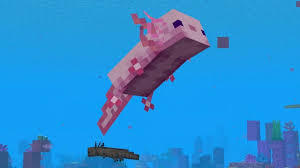
It's especially wonderful because the biggest hurdle to axolotl conservation for decades was that nobody knew what they were. Now they're so universally loved they might be the most popular amphibian species on the damn planet.

It's honestly kind of beautiful 🥲
693 notes
·
View notes
Text
Animal of the Day!
Wallace’s Flying Frog (Rhacophorus nigropalmatus)
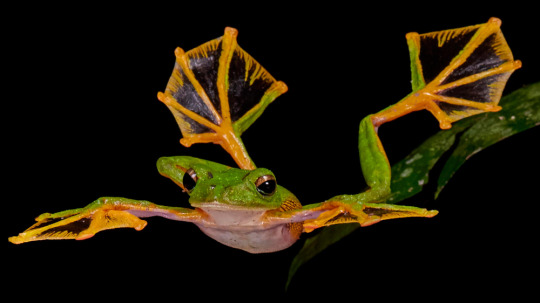
(Photo from Biosphoto)
Conservation Status- Least Concern
Habitat- Malaysia; Borneo
Size (Weight/Length)- 10 cm
Diet- Insects
Cool Facts- It’s a bird! It’s a plane! It’s a… frog? The Wallace's flying frog, sadly, can’t truly fly. Instead, a thin fringe of skin between their toes and fingers allow them to parachute to the forest floor from their arboreal home. These frogs only fall with style when threatened by a predator or searching for prey. Their feet help them to glide up to 50 meters to a neighboring tree or to the ground. The Wallace's flying frog's giant toes help them to stick safely to trees after a quick glide. During the breeding season, females lay a nest of eggs on a branch above a pond or stream. As the tadpoles hatch, the nest breaks apart and drops the babies into the water below.
Rating- 12/10 (I am, I am, I am Superfrog and I can do anything.)
#animal of the day#animals#frogs#amphibians#tuesday#september 19#wallace's flying frog#flying frog#biology#science#conservation#the more you know
522 notes
·
View notes
Text
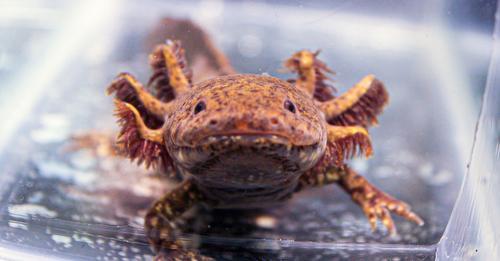
To save axolotls, a campaign in Mexico asks people to virtually adopt them
Despite their never-ceasing grins, axolotls have been at risk of extinction for years.
Over two decades ago, there were about 6,000 of these tiny salamanders for every square kilometer in Lake Xochimilco in Mexico City. In the last count from 2014, there were only about 36 axolotls per square kilometer, according to Luis Zambrano, who was involved in the axolotl census.
"It's gotten worse. They're not completely extinct, but it's worse," said Zambrano, who is also an ecologist at the National Autonomous University of Mexico.
Although their population has dwindled dramatically over the years, the creatures are more popular than ever thanks to social media and the video game Minecraft. Becoming an online sensation has also led to real world impact in pet stores, where demand for axolotls has skyrocketed...
Read more: https://www.npr.org/2023/11/27/1215247480/save-axolotls-mexico-endangered-virtual-adoption
____________________________________________
Find out more and help axolotls:
Preguntas Frecuentes | Restauración Ecológica (restauracionecologica.org)
#axolotl#endangered#salamander#conservation#mexico#north america#animals#nature#amphibian#herpetology#science#environment
385 notes
·
View notes
Text


Tropical Frogs! Denver Zoo
2023
#the amphibians were 100% on their game on this day#frogs#amphibians#animals#wildlife#wildlife photography#animal photography#cell phone photography#zoo photography#conservation#photography#denver#colorado
114 notes
·
View notes
Link
After conservationists dug hundreds of new ponds in the canton of Aargau, amphibian numbers significantly increased.
The European tree frog population in particular "exploded", scientists say.
Scientists hope this method could be used globally as pond building is simple and effective.
419 notes
·
View notes
Photo
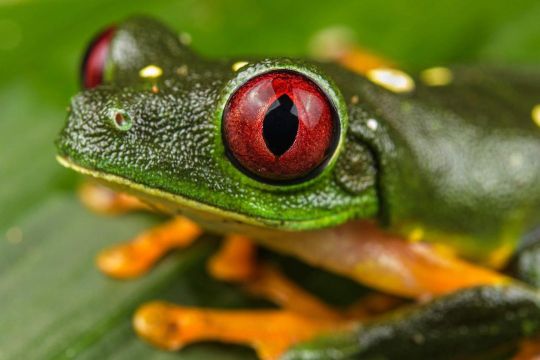
With my first visit to Panama in 2018 I was able to witness my first ever wild red-eye tree frogs (Agalychnis callidryas), and it happened the very first night there! This was the first wild adult red-eye I saw in my life. I’ll be always grateful to my friends Abel and Pamela of @fundacion_los_naturalistas for taking me there! We saw many (and even rarer) species there, but those red-eyes will always stay in my heart. #redeyetreefrog #agalychniscallidryas #panama #wildlife #amphibian #conservation #photography @ilcp_photographers https://www.instagram.com/p/CpipNtcKejF/?igshid=NGJjMDIxMWI=
219 notes
·
View notes
Text
Fungus Devastating Frogs on Nearly Every Continent May Have an Achilles Heel–and Scientists Think it Could Save the Amphibians https://www.goodnewsnetwork.org/fungus-devastating-frogs-on-nearly-every-continent-may-have-an-achilles-heel-and-scientists-think-it-could-save-the-amphibians/
“A pandemic among frogs has been going on worldwide for years—the culprit: a fungal infection that has affected amphibians on nearly every continent.
But now, the discovery of a virus that has evolved to replicate inside this fungus could be the key to saving nearly 500 species of frogs that have experienced declines due to this amphibian pandemic.
Viruses are the smallest organisms we know about, and researchers at Univ. of California, Riverside weren’t out looking for one when they found it embedded in the fungus DNA.
The fungus Batrachochytrium dendrobatidis or Bd, wasn’t prevalent until the late 1990s, when suddenly frogs just started dropping dead all over the world.
“We wanted to see how different strains of fungus differ in places like Africa, Brazil, and the U.S., just like people study different strains of COVID-19,” said UCR microbiology professor Jason Stajich.
To do this, Stajich and colleagues used DNA sequencing technology. As they examined the data, they noticed some sequences that did not match the DNA of the fungus.
“We realized these extra sequences, when put together, had the hallmarks of a viral genome,” Stajich said.
The team found that the virus—a single-strand DNA virus which literally is the smallest known organism—is integrated into the nuclear genome in some strains of Bd.
Attempts to cure virus-positive isolates were unsuccessful; however, differences between naturally virus-positive and virus-negative Bd isolates suggested that this virus decreases the growth of its host in vitro, the authors write.
They speculate that if the virus could be replicated and then engineered to further reduce this growth, biologists may have a method of saving amphibians like the harlequin frogs of Ecuador which have been heavily affected by Bd.
The scientists say that a lot more research is needed before such a cure might be manufactured, including for questions like how this virus infects its host.””
#microbes#microbiology#frogs#animal protection#animal conservation#animas#amphibia#amphibians#good news#environmentalism#science#environment#nature#animals#conservation
18 notes
·
View notes
Text


The fire salamander (Salamandra salamandra) is a funky little amphibian that I love seeing.
The adult gives birth to live youngs instead of eggs. Its skin is colored and signal that they are poisonous. This colored pattern is quite unique and you can identify individuals thanks to this.
For a long time, we thought that salamander were immune to fire or even born in it. That's why so many coats of arms show a salamander in flames. It was even the symbol of kings (like François the first in France).
When I saw this little salamander I was having a lesson in pedology in a forest but I couldn't hear it and just spent 20 minutes following it around.
27 notes
·
View notes
Text
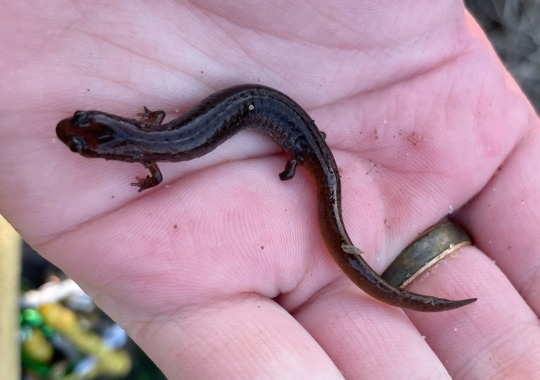
oklahoma salamander i found under a rock near a creek!! im getting fairly good at finding these guys i feel like
13 notes
·
View notes
Text

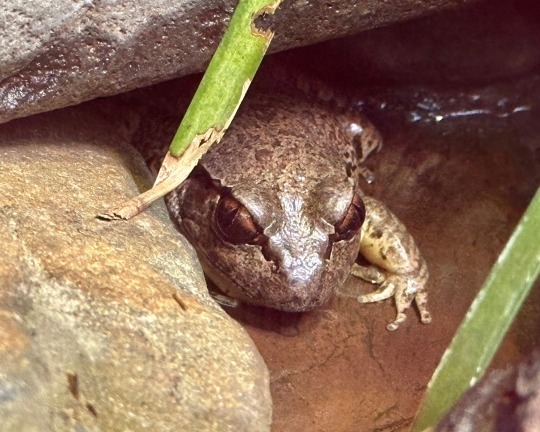


We met some more Beautiful Friends yesterday at Melbourne Zoo! Very Displeased Peanut with Manners was out again to say hi! Southern Barred Frog was showing off Excellent STARING! A Stickyfrogs’ cousin was enjoying a Happy Nap, and Gorgeous Growling Grass Frog was sunbathing in her Stylish Bronze Onesie!
#Eastern Dwarf Tree Frog#Southern Barred Frog#Green Tree Frog#Growling Grass Frog#frogs#australian frogs#endangered species#conservation#animals#amphibians#Melbourne zoo
349 notes
·
View notes
Text
Animal of the Day!
Green Salamander (Aneides aeneus)

(Photo by Matthew L. Niemiller)
Conservation Status- Near Threatened
Habitat- Appalachian Mountains
Size (Weight/Length)- 12 cm
Diet- Insects
Cool Facts- Like many species of salamander, the green salamander is extremely habitat-specific. They need an undergrowth covered in thick moss to keep their skin moist and even then they rarely leave their rocky crevice homes. Every so often, the green salamander will take a trip up a tree to find a hollow or crack to hang out in. The less sunlight, the better. They are the only salamanders in North America to have green pigment in their skin. A prehensile tail aids the tiny dudes in climbing over a mega sized world, even fallen logs pose a monumental effort. Male green salamanders are seen as one of the most aggressive salamanders. They are highly territorial towards other males, taking toes and even tails from their opponent.
Rating- 13/10 (Hibernate in the winter and return with the first rain of spring.)
#animal of the day#animals#salamander#amphibians#friday#november 10#green salamander#biology#science#conservation#the more you know
325 notes
·
View notes
Text
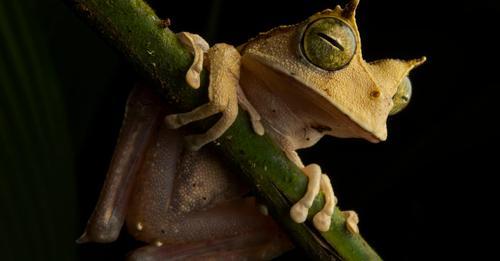
The Surprise Reappearance of a Rare Frog Has Scientists Leaping to Protect Its Habitat
The marsupial frog, which incubates its young in a pouch on its back, was thought to be extinct in some countries.
With jaunty peaks sticking up from its eyelids that may help it camouflage as a dry leaf, the horned marsupial frog is “a fascinating creature that people can’t wrap their heads around,” says James Muchmore, founder of Save the Chocó, a conservation group dedicated to protecting this threatened region of Ecuadorean rainforest.
Instead of laying thousands of eggs in water, like most frogs, female horned marsupial frogs produce only ten or fewer of the largest amphibian eggs in the world, at a whopping diameter of one centimeter. Males then fertilize these eggs and place them into a pouch on the mother’s back, which is what earns the species, and dozens of related frogs, the “marsupial” moniker.
As the embryos grow, they develop structures similar to mammalian placentas through which their mother delivers oxygen, water and possibly nutrients. After about two months, horned marsupial frog eggs hatch as forest-ready froglets, skipping the tadpole stage.
This remarkable adaptation frees them from the need to find ponds or streams for egg-laying. They spend their lives high in the trees of Central and South American rainforests, where the humid air is thought to keep their skin from drying out...
Read more: The Surprise Reappearance of a Rare Frog Has Scientists Leaping to Protect Its Habitat | Science | Smithsonian Magazine
#marsupial frog#frog#amphibian#herpetology#conservation#animals#nature#south america#central america
214 notes
·
View notes